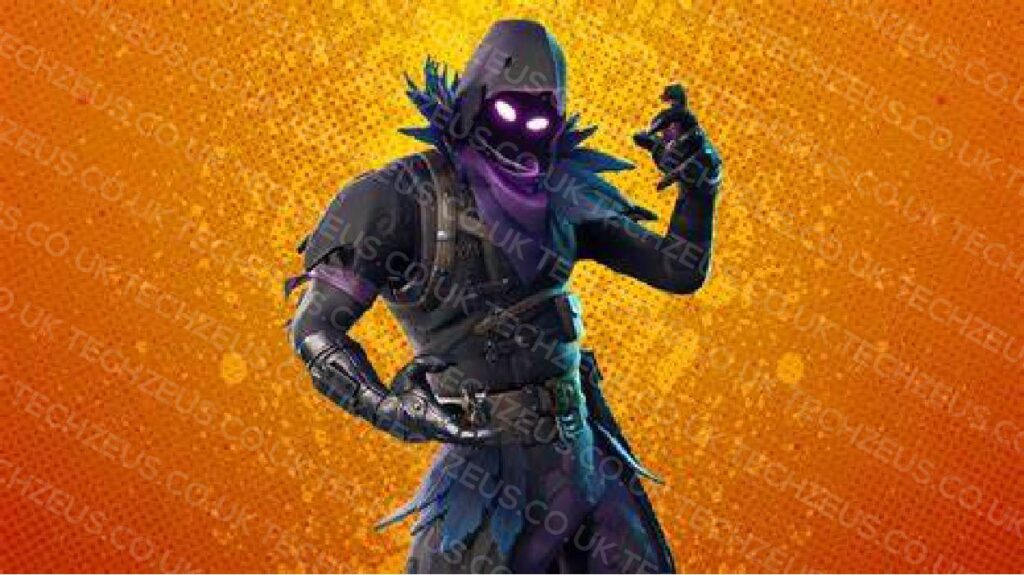(skin:ivl5ranfvva= fortnite) Fortnite, the battle royale phenomenon developed by Epic Games, has become a cultural juggernaut since its release in 2017. One of the key elements that have contributed to Fortnite’s massive success is its wide array of skins—cosmetic items that allow players to change the appearance of their in-game characters. Skins have evolved from simple visual changes to complex, narrative-driven designs that reflect not only the game’s ever-expanding universe but also the broader gaming culture. In this article, we will explore the significance, design, and cultural impact of Fortnite skins.
1. What Are Fortnite Skins?
(skin:ivl5ranfvva= fortnite) At its core, a Fortnite skin is a cosmetic item that changes the appearance of a player’s avatar. Skins do not affect gameplay or provide any competitive advantage; their sole purpose is to personalize the player’s character. Fortnite skins range from basic, simple designs to complex, animated outfits based on characters from pop culture, mythologies, and original creations by Epic Games.
2. The Early Days of Fortnite Skins
(skin:ivl5ranfvva= fortnite) In Fortnite’s early days, skins were relatively simple. Players could purchase skins through the in-game store, earn them via the Battle Pass, or unlock them through various seasonal events. Some of the early skins, like the “Renegade Raider” and “Aerial Assault Trooper,” are now highly coveted by collectors due to their rarity. Back then, skins were mostly inspired by generic military or battle gear.
3. The Battle Pass Revolution
(skin:ivl5ranfvva= fortnite) One of the key innovations that Fortnite introduced was the Battle Pass—a system that allows players to unlock a variety of skins, emotes, and other cosmetics by completing in-game challenges. This model has allowed Fortnite to continuously refresh its offerings and keep the player base engaged. The Battle Pass also introduced a tiered system that incentivized players to continue playing throughout the season to unlock exclusive skins.
4. Skins as Pop Culture Icons
(skin:ivl5ranfvva= fortnite) As Fortnite grew in popularity, its skins began to feature more recognizable characters from pop culture. Epic Games collaborated with major franchises such as Marvel, Star Wars, DC Comics, and even musicians like Travis Scott and Marshmello. These skins allowed players to embody their favorite heroes, villains, and celebrities within the game, adding a layer of personalization and fandom appeal.
5. The Icon Series Skins
(skin:ivl5ranfvva= fortnite) One of the most significant additions to Fortnite’s roster of skins is the “Icon Series.” This series includes characters inspired by real-world celebrities, influencers, and cultural icons. The first Icon Series skin to be released was that of streamer Ninja, followed by skins for Marshmello, Travis Scott, and many others. These skins have become some of the most popular in Fortnite history, bridging the gap between gaming and mainstream culture.
6. The Influence of Fortnite Skins on Fashion
(skin:ivl5ranfvva= fortnite) Fortnite skins have transcended gaming and entered the world of fashion. Many of the skins released in Fortnite have become cultural symbols, with players and fans adopting them as part of their own personal style. The design of skins often draws from contemporary fashion trends, and some outfits even resemble high-end streetwear. Fortnite has become a platform where fashion and gaming intersect.

7. The Role of Skins in Fortnite’s Economy
(skin:ivl5ranfvva= fortnite) While Fortnite itself is free-to-play, the game’s economic model is built around in-game purchases, with skins being a central component. Players can purchase V-Bucks, the in-game currency, and use them to buy skins, emotes, and other cosmetics. The sheer volume of skins available—coupled with their periodic rotation and rarity—has turned Fortnite’s cosmetic market into a multi-billion-dollar industry.
8. Limited Edition and Rare Skins
(skin:ivl5ranfvva= fortnite) Certain skins in Fortnite are released for limited-time events or as part of special collaborations. These limited-edition skins quickly become highly sought after, with some players even willing to pay premium prices for rare skins on third-party platforms. Examples of rare skins include “Black Knight” from Season 2, “Galaxy” from a Samsung promotion, and the “Recon Expert,” which was originally thought to be one of the rarest skins until its re-release.
9. The Collectible Nature of Fortnite Skins
(skin:ivl5ranfvva= fortnite) Fortnite skins have taken on a collectible aspect, especially with the introduction of limited-time offerings. Some players are motivated by the desire to own every skin, while others focus on acquiring only the rarest or most iconic ones. This has led to a culture of trading and collecting Fortnite skins, with some even treating them as digital assets that may increase in value over time.
10. Seasonal Skins and Events
(skin:ivl5ranfvva= fortnite) Fortnite is known for its ever-changing world, with new events and themes being introduced every season. Skins are a major part of these seasonal updates, as they often reflect the overall theme of the season. For example, the “Halloween” skins released around the “Fortnitemares” event are typically spooky or horror-themed, while “Winterfest” brings festive skins inspired by the holiday season.
11. The Impact of Crossovers and Collaborations
(skin:ivl5ranfvva= fortnite) Fortnite’s success can partly be attributed to its frequent collaborations with external franchises. These collaborations, or “crossovers,” have introduced skins based on characters from films, TV shows, comics, and even other video games. Some of the most popular crossover skins include characters like Spider-Man, Batman, and Kratos from the God of War series. These partnerships have helped Fortnite remain relevant and appeal to a wider audience.
12. The Artistic Design of Fortnite Skins
(skin:ivl5ranfvva= fortnite) Creating a skin for Fortnite is no small feat. Designers at Epic Games carefully consider the visual aesthetics, animations, and cultural relevance of each skin. Fortnite skins are often designed with vibrant colors and dynamic animations, making them visually striking in the game’s stylized world. The level of detail in skins—such as unique back bling, harvesting tools, and emotes—also adds a layer of complexity that enhances the player’s experience.
13. The Customization Aspect
(skin:ivl5ranfvva= fortnite) One of the key reasons players love Fortnite skins is the customization options they offer. Skins are often paired with additional cosmetic items like pickaxes, gliders, back bling, and emotes, all of which help players express their personal style. This deep level of customization is one of the reasons why Fortnite stands out from other battle royale games, as players are not limited to a standard set of characters.
14. The Evolution of Skins: From Simple to Complex
(skin:ivl5ranfvva= fortnite) In the early days of Fortnite, skins were relatively simple. However, as the game has evolved, so have the skins. Today, many skins feature complex animations, interactive elements, and even in-game transformations. Some skins, such as the “Transformers” or “Star Wars” skins, can change form depending on the player’s actions, making them much more dynamic than the static skins of the past.
15. Fortnite Skins and Their Influence on Other Games
(skin:ivl5ranfvva= fortnite) Fortnite’s success with skins has had a ripple effect across the gaming industry. Other games, such as Apex Legends, Call of Duty, and PUBG, have introduced similar cosmetic items and customization features to keep players engaged. Fortnite’s ability to monetize cosmetics without affecting gameplay has set a new standard for how in-game purchases can be integrated into free-to-play titles.
16. The Psychological Appeal of Skins
The desire to own rare or unique skins taps into human psychology, specifically the concepts of scarcity and exclusivity. Players may feel a sense of accomplishment or status when they possess a rare skin, and the constant influx of new skins provides a continual incentive to keep playing and spending. This psychological aspect is a powerful motivator for players to invest in Fortnite cosmetics.
17. Skins as a Social Currency
In Fortnite, skins have become a form of social currency. Players often show off their rare or exclusive skins in-game as a way to signal their dedication, skill, or involvement in certain events. The more rare or unique the skin, the higher the perceived social status. For many players, owning a coveted skin is a source of pride.
18. Fortnite Skins in Competitive Play
While skins do not provide any gameplay advantage in Fortnite, they have become a part of the game’s competitive culture. Streamers and professional players often showcase their favorite or rare skins during live broadcasts and tournaments, further adding to their prestige. In this sense, skins are a way for players to express their identity in competitive environments.

19. The Future of Fortnite Skins
As Fortnite continues to grow and evolve, so too will its skins. With advancements in technology, we can expect even more dynamic and interactive skins in the future. Epic Games has already experimented with skins that change based on in-game events or player actions, and it’s likely that more complex, narrative-driven skins will become a regular feature of Fortnite’s updates.
20. Community Reactions to Skins
Fortnite’s community has a strong opinion when it comes to the skins released in the game. Some players are passionate about specific skins, creating fan art, memes, or entire communities dedicated to their favorite outfits. Others criticize skins that they believe are too “pay-to-win” or unfairly priced. The community’s vocal feedback ensures that Epic Games constantly adjusts its offerings to satisfy player demands.
21. Controversies and Backlash Over Skins
Despite the widespread popularity of Fortnite skins, there have been instances of controversy. Some skins, such as those based on real-world cultural symbols or sensitive themes, have sparked debates over their appropriateness. In some cases, Epic Games has pulled or altered skins in response to backlash from the community. These controversies highlight the fine line that developers walk when designing content for a global, diverse player base.
22. The Role of Skins in Fortnite’s Narrative
In addition to their cosmetic appeal, some skins have been tied to Fortnite’s evolving narrative. Skins have served as both characters and symbols of larger in-game events. For example, skins like “The Visitor” and “The Scientist” are central to the ongoing story arcs of the game’s seasons, linking the cosmetic items to the lore and world-building efforts of Fortnite.
23. Skins and Their Emotional Appeal
For many players, skins represent more than just a visual upgrade; they are tied to memories, achievements, and experiences. A player may have unlocked a skin through hard work, or they may have participated in a memorable event that offered a limited-time skin. These emotional connections add an extra layer of meaning to the skins, transforming them into personal milestones in the player’s journey through Fortnite.
24. Fortnite Skins in the Digital Age
The rise of Fortnite skins is emblematic of the broader trend toward digital expression in the 21st century. As more and more of our lives are spent in digital spaces, avatars and skins have become powerful tools for self-expression. Just as fashion has always been a way for individuals to communicate who they are, Fortnite skins allow players to project their identities in the virtual world.
25. Conclusion: The Cultural Legacy of Fortnite Skins
Fortnite skins are more than just cosmetic items—they are an integral part of the game’s culture, economy, and community. From their early, simple designs to their complex, interactive forms today, skins have become symbols of self-expression, status, and creativity. As Fortnite continues to evolve, so too will its skins, ensuring their place as one of the defining features of modern gaming.







